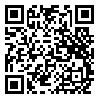Volume 3, Issue 3 (Occupational Medicine Quarterly Journal 2011)
tkj 2011, 3(3): 32-38 |
Back to browse issues page
Download citation:
BibTeX | RIS | EndNote | Medlars | ProCite | Reference Manager | RefWorks
Send citation to:



BibTeX | RIS | EndNote | Medlars | ProCite | Reference Manager | RefWorks
Send citation to:
Ebrahimzadeh M, Halvani G, Foroughinasab F, Jafari Nodoushan R. Evaluation of the Hearing State of Workers of a Uranium Mine in Central Region of Iran. tkj 2011; 3 (3) :32-38
URL: http://tkj.ssu.ac.ir/article-1-34-en.html
URL: http://tkj.ssu.ac.ir/article-1-34-en.html
Shahid Sadoughi University,Yazd , halvanig@yahoo.com
Abstract: (11329 Views)
Abstract
Background: Noise-induced hearing loss is on of the most important disease which may lead to some disturbances in workers' safety and performance. This study was conducted to evaluate the frequency of hearing loss among the workers of a uranium mine in the central region of Iran.
Methods: This was a cross-sectional descriptive study. Measurements were performed in A-weighting scale in response to fast detector. Frequency of hearing loss in left and right ears were assessed in 150 workers. Data was analyzed using SPSS.
Results: Mean age and duration of employment of the subjects was 33.68±7.56 years and 8.08±5.30 years, respectively. Pearson's correlation test showed a significant relationship between hearing loss at frequencies of 1000, 2000, 3000, 4000, 6000 and 8000 Hz with age and duration of employment (p<0.05). Hearing loss is increased by increasing age and duration of employment. Considering employment duration to be constant, hearing loss was averagely increased 0.52 for each unit increase in age and considering age to be constant, hearing loss was averagely increased 0.2 for each unit increase in employment duration.
Conclusion: This study didn't show a significant hearing loss among the workers because 39.3% of workers were young and 32.7% were office workers without significant exposure to noise but there was a positive correlation between total hearing loss and age and employment duration. Age was more effective on hearing loss than employment duration.
Type of Study: Research |
Received: 2012/02/15 | Accepted: 2020/04/14 | Published: 2020/04/14
Received: 2012/02/15 | Accepted: 2020/04/14 | Published: 2020/04/14
Send email to the article author
| Rights and permissions | |
 |
This work is licensed under a Creative Commons Attribution-NonCommercial 4.0 International License. |





